Parkside PKSB 210 A1 Handleiding
Parkside
Zaagmachine
PKSB 210 A1
Bekijk gratis de handleiding van Parkside PKSB 210 A1 (2 pagina’s), behorend tot de categorie Zaagmachine. Deze gids werd als nuttig beoordeeld door 48 mensen en kreeg gemiddeld 4.8 sterren uit 24.5 reviews. Heb je een vraag over Parkside PKSB 210 A1 of wil je andere gebruikers van dit product iets vragen? Stel een vraag
Pagina 1/2

KREISSÄGEBLATT ///
PKSB 210 A1
Technische Daten
1. Sägeblatt (Ø)
2. Sägeblattaufnahme (Ø)
3. Schnittbreite
4. Zahnform
5. Anzahl Zähne
6. Werkstoff-Schneidstoffklasse
7. Zu bearbeitendes Material
8. Höchstdrehzahl (min-1)
9. Drehrichtung
Tragen Sie Gehörschutz.
Die Einwirkung von Lärm kann
Gehörverlust bewirken.
Tragen Sie eine Schutzbrille.
Verletzungsgefahr der Augen durch
Funken, die beim Arbeiten entstehen
können oder durch aus dem Gerät
heraustretende Splitter, Späne und
Stäube.
Tragen Sie eine
Staubschutzmaske.
Gesundheitsschädlicher Staub kann
beim Bearbeiten von Holz und anderen
Materialien entstehen. Asbesthaltiges
Material darf nicht bearbeitet werden!
Warnung! Nicht das laufende
Sägeblatt berühren.
Ziehen Sie den Netzstecker, bevor
Sie das Montagezubehör an den
Elektrowerkzeugen montieren. Die
Sicherheitshinweise für die verwendeten
Elektrowerkzeuge müssen beachtet
werden.
Sicherheitshinweise
Werkzeuge dürfen nur von ausgebildeten
und erfahrenen Personen, die den Umgang
mit Werkzeugen vertraut sind, benutzt
werden, ansonsten besteht ein Risiko von
Verletzungsgefahr. Elektrowerkzeuge sind
gefährlich, wenn sie von unerfahrenen
Personen benutzt werden.
Die angegebene Höchstdrehzahl auf
dem Werkzeug darf nicht überschritten
werden. Ein Werkzeug, das sich schneller
als zulässig dreht, kann zerbrechen und
umherfliegen.
Gerissene oder beschädigte
Kreissägeblätter dürfen nicht verwendet
werden. Reparaturen sind nicht zulässig.
Werkzeuge mit sichtbaren Rissen dürfen
nicht verwendet werden.
Montage
Werkzeuge und Werkzeugkörper müssen
so aufgespannt sein, dass sie sich beim
Betreiben nicht lösen können.
Bei der Montage der Werkzeuge ist
sicherzustellen, dass das Aufspannen auf
der Werkzeugnabe bez. der Spannfläche
des Werkzeuges erfolgt, und dass die
Schneiden nicht miteinander oder mit den
Spannelementen in Berührung kommen.
Befestigungsschrauben und –muttern müssen
unter Verwendung geeigneter Schlüssel usw.
und mit dem vom Hersteller angegebenem
Drehmoment angezogen werden.
Die Verwendung von Schlagwerkzeugen
oder Verlängerungen für den Schlüssel zum
Festziehen sind nicht erlaubt.
Die Spannflächen müssen frei von
Verschmutzungen, Öl und Wasser sein!
Bitte beachten Sie die Angaben des
Herstellers bezüglich des Anspannens der
Spannschrauben. Liegen keine Angaben
hierzu vor, müssen die Spannschrauben von
der Mitte nach außen angezogen werden.
Leichtmetalllegierungen dürfen nur mit
Lösungsmitteln entharzt werden, die
die mechanischen Eigenschaften dieser
Werkstoffe nicht beeinträchtigen.
Die Verwendung von losen Reduzierringen
oder –buchsen zum Reduzieren von
Bohrungen bei Kreissägeblättern ist
nicht zulässig. Die Verwendung von fest
eingebrachten, z. B. eingepressten oder
durch Haftverbindung gehaltenen Ringen in
Kreissägeblättern oder von Flanschbuchsen
bei anderen Werkzeugen ist zulässig, wenn
sie nach den Festlegungen des Herstellers
gefertigt sind.
Aufgrund der Fertigungstoleranzen kann
es notwendig sein, dass die Reduzierringe
vorsichtig mit einem Gummihammer in
die Bohrung des Sägeblattes eingebracht
werden müssen. Legen Sie hierzu den
Bereich um die Bohrung des Sägeblattes
auf einen festen Untergrund (z. B. Holz),
die Zähne müssen beim Einschlagen frei
hängen, so dass das Sägeblatt nicht
gebogen wird.
Tauschen Sie den Reduzierring durch einen
neuen (im Fachhandel erhältlich), wenn er
nicht mehr von selbst im Sägeblatt hält.
Drehrichtung beachten!
Schutzhandschuhe tragen!
Handhabung
Zur Vermeidung von Verletzungen müssen
die Werkzeuge nach den Anleitungen des
Herstellers gehandhabt werden. Sichere
Handhabung beinhaltet üblicherweise
die Verwendung von Einrichtungen
wie Förderhaken, werkspezifischen
Haltevorrichtungen, Rahmen (z. B. für
Kreissägeblätter), Kisten, Förderkarren usw.
Durch das Tragen von Schutzhandschuhen
wird die Griffsicherheit am Werkzeug
verbessert und das Verletzungsrisiko weiter
gemindert.
Bei Werkzeugen mit einem Gewicht über
15 kg kann die Verwendung spezieller
Einrichtungen oder Befestigungen bei
der Handhabung in Abhängigkeit von
den konstruktiven Maßnahmen, die der
Hersteller für die einfache Handhabung
des Werkzeuges vorgesehen hat,
erforderlich sein. Der Hersteller kann
Angaben hinsichtlich der Verfügbarkeit der
erforderlichen Einrichtungen bereitstellen.
Diese Sägeblätter sind zum Nachschärfen
nicht geeignet!
Bitte beachten Sie zusätzlich die
Sicherheitshinweise des jeweiligen Gerätes.
Bewahren Sie die Sicherheitshinweise gut
auf.
Modifizieren Sie nicht das Werkzeug!
Reinigung und Pflege
Nach jedem Gebrauch sind die
Kreissägeblätter vorsichtig zu reinigen und
zur Verhinderung von Rost mit einem geölten
Tuch einzureiben.
Keine Reparaturen, kein Nachschärfen
oder sonstige Veränderungen an den
Sägeblättern durchführen. Beschädigte
Kreissägeblätter bitte nicht mehr verwenden.
Service
Service Deutschland
Tel.: 0800 5435 111
(kostenfrei aus dem
dt. Festnetz / Mobilfunknetz)
E-Mail: owim@lidl.de
Service Österreich
Tel.: 0820 201 222
(0,15 EUR/Min.)
E-Mail: owim@lidl.at
Service Schweiz
Tel.: 0842 665566
(0,08 CHF/Min.,
Mobilfunk max. 0,40 CHF/
Min.)
E-Mail: owim@lidl.ch
CIRCULAR SAW BLADE ///
PKSB 210 A1
Technical data
1. Saw blade (Ø)
2. Saw blade clamp (Ø)
3. Cut width
4. Type of teeth
5. Number of teeth
6. Classification of cutting material
7. Material to be processed
8. Maximum revolution (min-1)
9. Direction of rotation
Wear ear protection.
Noise exposure may cause hearing loss.
Wear safety goggles.
Risk of injury due to sparks generated
during work or due to splints, chipping
or dusts escaping from the machine.
Wear a dust mask.
Processing wood and other material
may generate harmful dust. Asbestos-
containing material must not be
processed!
Warning! Do not touch the running
saw blade.
Disconnect the mains plug before
installing the mounting accessories
in the power tools. Follow the safety
instructions for the power tools used.
Safety information
Tools must only be used by trained and
experienced persons familiar with the use
of tools, otherwise there is a risk of injury.
Power tools are dangerous in the hands of
untrained users.
Do not exceed the maximum revolution
indicated on the tool. A tool running faster
than its rated speed can break and fly
apart.
Circular saw blades that are cracked or
damaged must not be used.
Tools with apparent cracks must not be
used.
Assembly
When clamping tools and tool heads, make
sure they cannot loosen during operation.
During assembly of the tools make sure that
the clamping onto the tool hub is carried
out in regard to the clamping surface of the
tool, and that the cutting edges do not touch
each other or any clamping element.
When tightening mounting screws and
nuts, use suitable wrenches etc. and apply
the turning moment indicated by the
manufacturer.
The use of striking tools or wrench
extensions for the purpose of tightening is
prohibited.
Keep the clamping surfaces free from dirt,
oil and water!
Please observe the instructions by the
manufacturer for clamping the clamp
screws. If instructions are not available,
tighten the clamp screws from the centre
working outwards.
For the deresination of light metal alloy
do only use solvents that will not affect
the mechanical characteristics of these
materials.
The use of loose reducing rings or bushing
for reducing the boring of circular saw
blades is prohibited. It is admissible to use
fixed rings in circular saw blades (e.g. rings
that are injected or held by a non-load-
bearing joint) or flange bushing with other
tools, if they were produced according to
the specifications by the manufacturer.
Due to the manufacturing tolerances it might
be necessary to insert the reducing rings into
the boring of the circular saw blade using a
rubber mallet. For doing so, place the area
around the boring of the saw blade on a
stable surface (e.g. wood). The teeth must
hang freely during hammering in order for
the saw blade not to bend.
If the reducing ring can no longer hold itself
in the saw blade, replace it by a new one
(available in specialist shops).
Observe the direction of rotation!
Wear protective gloves!
Use
Use the tools according to the instructions
by the manufacturer in order to avoid
injuries. A safe use commonly implies the
use of equipment such as bank hooks,
plant-specific clamping systems, frames
(e.g. for circular saw blades), boxes, drays,
etc. Wearing protective gloves will further
enhance a secure grip at the tool and
reduce the risk of injury.
Handling tools of more than 15 kg might
require the use of special equipment or
mounts depending on the constructive
measures by the manufacturer provided for
the easy use of the tool. The manufacturer
can provide information regarding the
availability of required equipment.
These saw blades are not suitable for re-
sharpening!
Please also observe the safety information
of the particular machines.
Keep the safety information for future use.
Do not modify the tool!
Cleaning and maintenance
Clean the circle saw blades carefully after
every use and rub with an oiled cloth to
protect them from build up of rust.
Repair, regrinding/re-sharpening and
modification are not allowed. If any defects
are found, please do NOT use the product
any more.
Service
Service Great Britain
Tel.: 0800 404 7657
E-Mail: owim@lidl.co.uk
Service Ireland
Tel.: 1890 930 034
(0,08 EUR/Min., (peak))
(0,06 EUR/Min., (off peak))
E-Mail: owim@lidl.ie
LAME DE SCIE CIRCULAIRE ///
PKSB 210 A1
Spécifications
1. Lame de scie (Ø)
2. Crampon de la lame de scie (Ø)
3. Largeur de coupe
4. Type de dents
5. Nombres de dents
6. Classification du matériau de coupe
7. Matériau à traiter
8. Révolution maximale (min-1)
9. Direction de la rotation
Portez une protection anti-bruit.
L’exposition au bruit peut entraîner la
perte auditive.
Portez des lunettes de
protection.
Risque de blessure à cause des
étincelles générées durant le travail ou
à cause es éclisses ou des copeaux
ou des poussières s’échappant de la
machine.
Portez un masque anti-
poussière.
Travailler sur du bois ou d’autres
matériaux peut créer une poussière
nocive: Les matériaux contenant de
l’amiante ne peuvent pas être utilisés!
Avertissement! Ne touchez pas la
lame de la scie en cours de coupe.
Débranchez la prise de courant
avant d’assembler les accessoires de
montage sur les outils électriques. Les
instructions de sécurité concernant
les outils électriques doivent être
respectées.
Informations de sécurité
Les outils doivent être utilisés seulement par
des personnes formées et expérimentées
qui se sont familiarisées avec leur utilisation,
sinon il existe un risque important de
blessure. Les outils électriques sont
dangereux lorsqu’ils sont utilisés par des
personnes inexpérimentées.
Le nombre de tours maximal spécifié sur
l’outil ne doit pas être dépassé. Un outil, qui
tourne plus vite que la vitesse autorisée, peut
se casser ou s’envoler.
Les lames de scies circulaires fissurées ou
endommagées ne doivent pas être utilisées.
Les outils avec d’apparentes fissures ne
doivent pas être utilisés.
Assemblage
Quand vous serrez les outils et les têtes
d’outils, assurez-vous qu’ils ne peuvent pas
se desserrer en cours d’utilisation.
Au cours de l’assemblage des outils,
assurez-vous que le serrage sur la douille
d’outils est effectué en fonction de la surface
de serrage de l’outil, et que les bords de
coupe ne se touchent pas ou qu’ils ne
touchent pas d’autres éléments de serrage.
Quand vous serrez les vis et les écrous de
montage, utilisez des clés convenables etc.
et utilisez le moment de rotation indiqué par
le fabricant.
L’utilisation d’outils de percussions ou de
rallonges de clés pour le serrage est interdit.
Gardez les surfaces de serrage propres,
sans huile et sans eau!
Veuillez suivre les instructions de serrage
des vis de serrage du fabricant. Si les
instructions ne sont pas disponibles, serrez
les vis de serrage à partir du centre en
travaillant vers l’extérieur.
Pour la dérésinage de métaux d’alliage
légers, n’utilisez que des solvants qui
n’affectent pas les caractéristiques
mécaniques des ces matériaux.
L’utilisation d’anneaux amples réducteurs ou
de bagues pour réduire le forage des lames
de scies circulaires est interdit. Des anneaux
fixes pour lames de scies circulaires peuvent
éventuellement être utilisés (ex. anneaux
qui sont injectés ou tenus par un joint non-
porteur) ou douilles à collet avec d’autres
outils, s’ils sont produits conformément aux
spécifications du fabricant.
A cause des tolérances de fabrication il
peut être nécessaire d’insérer les anneaux
de réduction dans le forage de la lame
de scie circulaire en utilisant un maillet en
caoutchouc. Pour cela, placez cet endroit
autour du forage de la lame de scie sur
une surface stable (ex. du bois). Les
dents doivent pendre librement durant le
martèlement pour que la lame de scie ne se
torde pas.
Si l’anneau réducteur ne peut plus se
maintenir dans la lame de scie, remplacez-
le par un nouveau (disponible dans des
magasins spécialisés).
Observez la direction de rotation!
Portez des gants de protection!
Utilisation
Utilisez les outils en suivant les instructions
du fabricant pour éviter les blessures. Toute
utilisation sûre sous entend l’utilisation
d’un équippement comme des crochets
de bordure, des systèmes de serrage
spécifiques d’usines, des cadres (ex. pour
les lames de scies circulaires), des boites,
des charriots, etc. Porter des gants de
protection permettra aussi d’améliorer une
prise sûre de l’outil et de réduire le risque de
blessure.
Les outils d’accrochage de plus de
15 kg peuvent nécessiter l’utilisation
d’équippement spécial ou de fixations
suivant les mesures de constructions du
fabricant fournies pour une utilisation facile
de l’outi. L’usine de fabrication peut fournir
des informations concernant la disponibilité
de l’équippement requis.
Ces lames de scies ne peuvent pas être
réaffutées!
Veuillez aussi suivre les informations de
sécurité des machines particulières.
Conservez les informations de sécurité pour
référence future.
Ne modifiez pas l’outil!
Nettoyage et entretien
Nettoyez les lames de scie circulaire
soigneusement après chaque utilisation,
puis frottez-les à l’aide d’un chiffon imbibé
d’huile afin de les protéger de toute
accumulation de rouille.
Il est interdit de procéder à toute réparation,
tout réaffûtage et toute modification. En cas
de détection de défauts, veuillez NE PLUS
utiliser le produit.
Service après-vente
Service après-vente France
Tél.: 0800 919270
E-Mail: owim@lidl.fr
Service après-vente Belgique
Tél.: 070 270 171
(0,15 EUR/Min.)
E-Mail: owim@lidl.be
CIRKELZAAGBLAD ///
PKSB 210 A1
Specificaties
1. Zaagblad (Ø)
2. Zaagbladklem (Ø)
3. Snijbreedte
4. Soort tanden
5. Aantal tanden
6. Classificatie van snijmateriaal
7. Te bewerken materiaal
8. Maximale toerental (min-1)
9. Draairichting
Draag oorbescherming.
Blootstelling aan lawaai kan
gehoorverlies veroorzaken.
Draag een veiligheidsbril.
Risico op letsel door de vonken die
tijdens het gebruik ontstaan of door de
splinters, spaanders of stof die uit het
apparaat komen.
Draag een stofmasker.
Het bewerken van hout of andere
materialen kunnen schadelijke stoffen
genereren. Bewerk geen materialen die
asbest bevatten.
Waarschuwing! Raak het draaiend
zaagblad niet aan.
Trek de stroomstekker eruit, voordat
u het montagetoebehoor aan het
elektrisch gereedschap monteert. De
veiligheidsinstructies voor de gebruikte
elektrische gereedschappen dienen in
acht te worden genomen.
Veiligheidsinformatie
Apparaten mogen alleen gebruikt worden
door opgeleide en ervaren personen, die
vertrouwd zijn met het werken met die
apparaten, anders bestaat er een kans op
verwondingen. Elektrische apparaten zijn
gevaarlijk als ze door onervaren personen
worden gebruikt.
Het op het apparaat aangegeven maximale
toerental mag niet worden overschreden.
Een apparaat dat gebruikt wordt bij hoger
toerental dan is toegestaan, kan breken en
rondgeslingerd worden.
Gebruik geen gebarsten of beschadigde
cirkelzaagbladen.
Gebruik geen gereedschap met zichtbare
barsten.
Montage
Span het gereedschap en de opzetstukken
stevig op zodat deze tijdens de werking niet
los komen.
Tijdens de montage van het gereedschap
zorg dat het opspannen op de naaf wordt
uitgevoerd in overeenstemming met het
spanoppervlak van het gereedschap, en
dat de snijranden niet met elkaar of met de
spanelementen in aanraking komen.
Maak de bevestigingsschroeven en –
moeren met behulp van geschikte sleutels,
enz. vast en draai aan tot het draaimoment
zoals aangegeven door de fabrikant.
Het gebruik van slaggereedschap of
verlengstukken voor sleutels tijdens het
aandraaien is niet toegestaan.
Houd de spanoppervlakken vrij van vuil,
olie en water!
Raadpleeg de instructies van de fabrikant
voor het opspannen van de spanschroeven.
Als er geen instructies beschikbaar zijn,
draai de spanschroeven vanaf het midden
naar buiten aan.
max.
7000 min 1
1
9
8
2
3
5
6
i
EN 847-1
7
8
HG00147C
4
Ø
210 mm x
Ø
30 mm x
2.6 mm
(TR-F)
HW
42
HG00147D
4
max.
7000 min1
1
8
2
3
5
6
Ø
210 mm x
Ø
30 mm x
2.6 mm
(TR-F)
HW
60
HG00147E
4
max.
7000 min 1
1
2
3
5
6
Ø
210 mm x
Ø
30 mm x
2.6 mm
(TR-F)
HW
80
max.
7000 min1
1
7
9
8
2
3
5
6HW
80
HG00147H
4
Ø
210 mm x
Ø
30 mm x
2.6 mm
(WZ)
9
i
EN 847-1
7
9
i
EN 847-1
7
i
EN 847-1
i
EN 847-1
i
EN 847-1

Gebruik voor het ontharsen van
lichtmetaallegeringen alleen oplosmiddelen
die de mechanische eigenschappen van
deze materialen niet schaden.
Het gebruik van losse reductieringen
of –bussen voor het reduceren van
de boring bij cirkelzaagbladen is niet
toegestaan. Het gebruik van vaste ringen in
cirkelzaagbladen (bijv. ringen die ingeperst
of door een niet dragende verbinding
worden vastgehouden) of flensbussen met
ander gereedschap is toegestaan als deze
volgens de specificaties van de fabrikant
zijn vervaardigd.
Omwille van de fabricagetoleranties kan
het nodig zijn om de reductieringen in de
boring van het cirkelzaagblad met behulp
van een rubber hamer in te brengen.
Plaats hierbij de zone rond de boring van
het zaagblad op een stabiel oppervlak
(bijv. hout). De tanden moeten tijdens het
hameren vrij hangen zodat het zaagblad
niet wordt gebogen.
Vervang de reductiering door een nieuwe
(in de vakhandel verkrijgbaar), als deze niet
langer uit zichzelf in het zaagblad blijft.
Houd rekening met de draairichting!
Draag veiligheidshandschoenen!
Werking
Gebruik het gereedschap in
overeenstemming met de instructies van
de fabrikant om letsel te voorkomen. Een
veilige werking duidt over het algemeen op
het gebruik van bankhaken, werkspecifieke
spansystemen, frames (bijv. voor
cirkelbladzagen), kisten, sledes, enz. Draag
veiligheidshandschoenen voor een betere
grip van het gereedschap en een lager
risico op letsel.
Voor gereedschap zwaarder dan 15 kg
kan het gebruik van speciale uitrusting of
bevestigingen nodig zijn naar gelang de
constructieve maatregelen die de fabrikant
voor een eenvoudige werking van het
gereedschap heeft opgelegd. De fabrikant
kan informatie over de beschikbaarheid van
de benodigde uitrusting verschaffen.
Deze zaagbladen zijn niet geschikt om
opnieuw geslepen te worden!
Lees de veiligheidsinformatie die op de
desbetreffende apparaten is vermeld.
Bewaar de veiligheidsinformatie voor
toekomstige raadpleging.
Pas het gereedschap niet aan!
Schoonmaken en onderhoud
Na ieder gebruik moeten de
cirkelzaagbladen voorzichtig schoon
gemaakt en, om roesten te voorkomen, met
een oliedoekje ingewreven worden.
Cirkelzaagbladen niet repareren, slijpen
of anderszins veranderen. Het is het best
beschadigde zaagbladen niet meer te
gebruiken.
Service
Service Nederland
Tel.: 0900 0400 223
(0,10 EUR/Min.)
E-Mail: owim@lidl.nl
Service Belgiё
Tel.: 070 270 171
(0,15 EUR/Min.)
E-Mail: owim@lidl.be
TARCZA DO CIĘCIA ///
PKSB 210 A1
Dane techniczne
1. Tarcza (Ø)
2. Otwór tarczy (Ø)
3. Szerokość cięcia
4. Typ zębów
5. Liczba zębów
6. Klasa materiału tnącego
7. Materiał obrabiany
8. Maksymalna liczba obrotów (min-1)
9. Kierunek obrotu
Należy nosić nauszniki
ochronne.
Hałas może spowodować utratę słuchu.
Należy nosić okulary ochronne.
Ryzyko uszkodzenia oczu przez iskry,
które powstają podczas pracy, lub
przez wydzielane przez urządzenie
odpryski, opiłki i kurz.
Należy nosić maskę
przeciwpyłową.
Szkodliwy dla zdrowia pył może
powstać przy obrabianiu drewna i
innych materiałów. Nie wolno obrabiać
materiałów zawierających azbest!
Uwaga! Nie wolno dotykać
poruszającej się tarczy.
Przed montażem wyposażenia do
elektronarzędzi należy wyjąć wtyczkę
sieciową. Należy przestrzegać
wskazówek bezpieczeństwa dla
używanych elektronarzędzi.
Wskazówki dotyczące
bezpieczeństwa
Narzędzia mogą być używane wyłącznie
przez przeszkolone i doświadczone osoby,
które są zaznajomione z użyciem narzędzi,
w przeciwnym razie istnieje ryzyko obrażeń.
Elektronarzędzia są niebezpieczne, gdy są
używane przez niedoświadczonych ludzi.
Nie należy przekraczać podanej
maksymalnej prędkości narzędzia.
Narzędzie, które będzie kręcić się szybciej
niż jest to dozwolone, może pęknąć i
polecieć.
Nie wolno używać pękniętych lub
uszkodzonych tarcz do pił tarczowych.
Naprawy nie są dozwolone.
Nie wolno używać tarcz z wyraźnymi
pęknięciami.
Montaż
Narzędzia zaciskowe i korpusy narzędzi
należy tak napiąć, aby nie poluzowały się
w trakcie pracy.
W trakcie montażu narzędzi należy
upewnić się, że zacisk na piaście
narzędzia jest wykonany w odniesieniu
do powierzchni zaciskowej narzędzia i
że krawędzie tnące nie dotykają się ani
żadnego elementu zaciskowego.
Śruby i nakrętki mocujące należy dokręcić
przy pomocy odpowiednich kluczy itp.
stosując podany przez producenta moment
obrotowy.
Do dokręcania nie wolno używać narzędzi
udarowych ani przedłużek na klucz.
Utrzymuj powierzchnie zaciskowe wolne od
brudu, oleju i wody!
Zwróć uwagę na instrukcje producenta
dotyczące zaciskania śrub zaciskowych.
Jeśli nie ma instrukcji, dokręć śruby
zaciskowe od środka na zewnątrz.
Do odżywiczania stopów metali lekkich
używaj wyłącznie rozpuszczalników, które
nie będą wpływać na charakterystykę
mechaniczną tych materiałów.
Nie wolno używać luźnych tulei
redukcyjnych do zmniejszania otworu
tarczy. Używanie zamocowanych na stałe,
np. wprasowanych lub wspawanych tulei
w tarczy lub tulei flanszowych w innych
narzędziach jest dozwolone, jeśli wykonano
te zgodnie z zaleceniami producenta.
Z powodu tolerancji produkcyjnych
może być konieczne ostrożne wbicie
tulei redukcyjnej do otworu przy pomocy
gumowego młotka. W tym celu połóż
obszar wokół otworu na twardym podłożu
(np. drewnie), zęby muszą w trakcie
wbijania wisieć swobodnie, aby tarcza się
nie wygięła.
Wymień tuleję redukcyjną na nową
(dostępną w sprzedaży), jeśli nie trzyma się
ona samoistnie w tarczy.
Zwróć uwagę na kierunek obrotu!
Należy nosić rękawice ochronne!
Obsługa
Aby uniknąć obrażeń należy obsługiwać
narzędzia zgodnie z instrukcjami
producenta. Bezpieczna obsługa zawiera
zwykle użytkowanie urządzeń takich
jak suwnice, imadła, ramy (np. do pił
tarczowych), pudeł, taczek itp. Poprzez
noszenie rękawic ochronnych poprawia się
pewność uchwytu narzędzia, co zmniejsza
ryzyko obrażeń.
W przypadku obsługi narzędzi o ciężarze
większym niż 15 kg może być konieczne
zastosowanie specjalnego wyposażenia
lub mocowań w zależności od rozwiązań
konstrukcyjnych przewidzianych przez
producenta do prostej obsługi narzędzia.
Producent może przedstawić więcej
informacji w zakresie dostępności
wymaganego wyposażenia.
Niniejsze tarcze nie są przeznaczone do
ponownego ostrzenia!
Zwróć uwagę na dodatkowe wskazówki
dotyczące bezpieczeństwa na urządzeniu.
Przechowuj niniejsze wskazówki dotyczące
bezpieczeństwa do wglądu w przyszłości.
Nie modyfikuj narzędzia!
Czyszczenie i konserwacja
Po każdym użyciu starannie czyścić
brzeszczoty i pocierać naoliwioną szmatką,
aby chronić ją przed gromadzeniem się
rdzy.
Naprawianie, szlifowanie lub ponowne
ostrzenie jest zabronione. W przypadku
wykrycia jakichkolwiek defektów, NIE
używać więcej produktu.
Serwis
Serwis Polska
Tel.: 22 397 4996
E-Mail: owim@lidl.pl
PILOVÝ KOTOUČ /// PKSB 210 A1
Specifikace
1. Listu pily (Ø)
2. Upínadla listu pily (Ø)
3. Šířka řezu
4. Typ zubů
5. Počet zubů
6. Klasifikace řezacího materiálu
7. Materiál, který má být zpracováván
8. Maximální otáčky (min-1)
9. Směr otáčení
Noste ochranu sluchu.
Vystavení hluku může způsobit ztrátu
sluchu.
Noste ochranné brýle.
Nebezpečí zranění vdůsledku jisker
vznikajících vprůběhu práce nebo
vzhledem kodštěpkům, třískám nebo
prachu odlétávajícím ze stroje.
Noste protiprachovou masku.
Při zpracování dřeva a jiného
materiálu může vznikat škodlivý prach.
Asbest obsahující materiál nesmí být
zpracováván. sbesthaltiges Material
darf nicht bearbeitet werden!
Výstraha! Nedotýkejte se běžícího
pilového listu.
Před montáží příslušenství výrobku na
elektrická zařízení vytáhněte zástrčku
ze zásuvky. Dbejte na bezpečnostní
pokyny pro používaná elektrická
zařízení.
Bezpečnostní informace
Nástroje smí být používány pouze
vyškolenými a zkušenými osobami, které
jsou obeznámeny se zacházením s nástroji,
jinak existuje riziko zranění. Elektrické
nástroje jsou nebezpečné, když jsou
používány nezkušenými osobami.
Maximální rychlost vyznačená na nástroji
nesmí být překročena. Nástroj, který se
otáčí rychleji, než je pro něj povoleno, se
může rozlomit a odletět.
Listy kotoučové pily, které jsou prasklé nebo
poškozené, nesmí být používány.
Nástroje se zřejmými prasklinami se nesmí
používat.
Montáž
Při upínání nástrojů a hlavic nástrojů se
ujistěte, že se nemohou vprůběhu provozu
otevřít.
Vprůběhu montáže nástrojů se ujistěte,
že upínání na hlavu nástroje je provedeno
vzhledem kupínacímu povrchu nástroje
a že se břity nedotýkají navzájem nebo
jakéhokoliv upínacího prvku.
Když utahujete upevňovací šrouby a matice,
používejte vhodné klíče atd. a aplikujte
utahovací moment uvedený výrobcem.
Použití nárazových nástrojů nebo
prodloužení klíčů pro účel utahování je
zakázáno.
Udržujte upínací povrchy bez nečistot, oleje
a vody.
Dodržujte, prosím, pokyny od výrobce pro
upínání upínacích šroubů. Když nejsou
pokyny kdispozici, utahujte upínací šrouby
od pracovního středu směrem ven.
Pro odstraňování pryskyřic ze slitin lehkých
kovů používejte pouze rozpouštědla, která
neovlivní mechanickou charakteristiku těchto
materiálů.
Použití volných redukčních prstenců nebo
objímek pro redukci otvoru listů kotoučové
pily je zakázáno. Je přípustné použít pevně
zabudované kroužky vlistech kotoučové pily
(např. kroužky, které jsou zalisovány nebo
drženy spojením nenesoucím zatížení) nebo
přirubových pouzder, když jsou vyrobeny
podle specifikací výrobce.
Vzhledem kvýrobním tolerancím může být
nutné vložit redukční kroužky do otvoru listu
kotoučové pily spomocí gumové palice.
Abyste to provedli, umístěte místo okolo
otvoru listu pily na stabilní povrch (např.
dřevo). Zuby musí být vprůběhu zatloukání
volnéy,aby se list pily neohnul.
Když redukční kroužek už sám nedrží vlistu
pily, nahraďte ho za nový (k doastání ve
specializovaných obchodech).
Dodržte směr otáčení!
Noste ochranné rukavice!
Používání
Abyste zabránili zraněním, používejte
nástroje podle pokynů výrobce. Bezpečné
používání obvykle zahrnuje použití zařízení,
jako jsou těžní háky, pro systém specifické
upínací systémy, rámy (např. pro listy
kotoučové pily), bedny, vozíky atd. Nošení
ochranných rukavic dále zlepšuje bezpečné
uchopení nástroje a snižuje nebezpečí
zranění.
Manipulace nástroji o hmotnosti více než
15 kg může vyžadovat použití speciálních
zařízení nebo držáků vzávislosti na
konstrukčních opatřeních od výrobce, které
jsou určeny pro snadné používání nástroje.
Výroba může poskytnout informace ohledně
dosažitelnosti požadovaného zařízení.
Tyto pilové listy nejsou vhodné pro
opakované ostření!
Dodržujte, prosím, rovněž bezpečnostní
informace konkrétního stroje.
Uchovejte bezpečnostní informace pro
budoucí použití.
Nástroj neupravujte!
Čištění a údržba
Po každém použití pečlivě vyčistěte
pilové zuby a otřete je k jejich ochraně
naolejovanou látkou k jejich ochraně před
tvořením rzi.
Oprava, přebrušování/ostření a úpravy
nejsou dovoleny. Pokud jsou zjištěny
jakékoliv závady, už výrobek prosím
NEPOUŽÍVEJTE.
Servis
Servis Česká republika
Tel.: 800 143 873
E-Mail: owim@lidl.cz
PÍLOVÝ KOTÚČ /// PKSB 210 A1
Technické údaje
1. Pílový kotúč (Ø)
2. Svorka pílového kotúča (Ø)
3. Šírka rezu
4. Typy zubov
5. Počet zubov
6. Klasifikácia rezného materiálu
7. Spracúvaný materiál
8. Maximálne otáčky (min-1)
9. Smer otáčania
Nasaďte si ochranu uší.
Vystavenie hluku môže spôsobiť stratu
sluchu.
Nasaďte si ochranné okuliare.
Nebezpečenstvo poranenia z dôvodu
iskier, ktoré sa tvoria počas práce
alebo triesok, odštepkov alebo prachu,
ktoré vychádzajú zo stroja.
Nasaďte si respirátor.
Spracúvanie dreva a iných materiálov
môže vytvárať škodlivý prach.
Materiály, ktoré obsahujú azbest,
nesmiete spracúvať!
Varovanie! Pílového listu sa počas
chodu nedotýkajte.
Predtým, ako namontujete montážne
príslušenstvo na elektronáradie,
vytiahnite sieťovú zástrčku. Je potrebné
dodržiavať bezpečnostné pokyny pre
používané elektrické prístroje.
Bezpečnostné informácie
Náradie smú používať iba vyškolené a
skúsené osoby, ktoré sú oboznámené
s manipuláciou s náradím, v opačnom
prípade vzniká riziko poranenia. Elektrické
náradie je nebezpečné, ak ho používajú
neskúsené osoby.
Nesmú sa prekročiť maximálne otáčky
uvedené na náradí. Náradie, ktoré sa točí
rýchlejšie ako je povolené, sa môže zlomiť
a odletieť.
Kotúčové listy, ktoré sú prasknuté alebo
poškodené, nesmiete používať.
Nástroje s viditeľnými prasklinami nesmiete
používať.
Montáž
Pri upínacích nástrojoch a nožových hlavách
sa uistite, že sa počas prevádzky neotvoria.
Počas montáže nástroja sa uistite, že
zasvorkovanie hlavy nástroja bolo
uskutočnené podľa upínacieho povrchu
nástroja a že rezné hrany sa nedotýkajú
žiadneho upínacieho prvku.
Pri upevňovaní montážnych skrutiek a
matíc použite vhodné kľúče, atď. a použite
uťahovacie momenty, stanovené výrobcom.
Používanie úderných nástrojov alebo
kľúčové predĺženia je zakázané.
Upínacie povrchy udržujte bez nečistôt,
oleja a vody!
Dodržiavajte pokyny výrobcu pri svorkovaní
upínacích skrutiek. Ak nie sú pokyny k
dispozícii, uťahujte upínacie skrutky od
stredu k okrajom.
Na odstránenie živice ľahkej kovovej zliatiny
používajte iba rozpúšťadlá, ktoré nebudú
mať vplyv na mechanickú charakteristiku
týchto materiálov.
Používanie krúžkov na redukciu uvoľnenia
alebo puzdro na redukciu vŕtania
kotúčových listov je zakázané. V pílových
kotúčoch môžete použiť pevné krúžky (t.j.
krúžky, ktoré sú vsadené alebo držané
ložiskovým kĺbom) alebo prírubovým
puzdrom s inými nástrojmi, ak boli vyrobené
podľa špecifikácií výrobcu.
Z dôvodu výrobných tolerancií môže byť
potrebné, aby ste vložili redukčné krúžky do
otvoru pílového kotúča pomocou gumeného
kladivka. Spravíte to tak, že povrch okolo
otvoru pílového kotúča položíte na pevný
povrch (napr. drevo). Zuby musia počas
búchania voľne visieť, aby sa pílový list
nezohol.
Ak už redukčný krúžok nevydrží ďalej
držať, vymeňte ho za nový (dostupné v
špeciálnych obchodoch).
Dodržujte smer otáčania!
Nasaďte si ochranné rukavice!
Použitie
Používajte nástroje podľa pokynov výrobcu,
aby ste sa vyhli poraneniam. Bezpečné
použitie sa vzťahuje hlavne na používanie
vybavenia, ako sú háky, upínacie systémy
špecifické pre závod, rámy (napr. pre
pílové kotúče), schránky, vozíky, atď. Pri
ďalšom rozširovaní rukoväte pri nástroji si
nasaďte ochranné rukavice, aby ste znížili
nebezpečenstvo porania.
Pri manipulácii s nástrojmi, ktoré majú
viac ako 15 kg sa vyžaduje špeciálne
vybavenie alebo montáže, v závislosti od
konštrukčných opatrení výrobcu dodaný
pre jednoduché použitie nástroja. Výrobca
môže poskytnúť informácie, týkajúce sa
dostupnosti požadovaného vybavenia.
Pílové kotúče nie sú vhodné na opätovné
ostrenie!
Dodržiavajte bezpečnostné informácie
konkrétnych strojov.
Bezpečnostné opatrenia si odložte pre
budúce použitie.
Nástroj neupravujte!
Čistenie a údržba
Kotúče po každom použití opatrne vyčistite
a pretrite naolejovanou látkou, aby ste ich
chránili pred hrdzou.
Oprava, prebrusovanie/ostrenie a
úpravy nie sú povolené. Ak zbadáte
akékoľvek poškodenia, výrobok už viac
NEPOUŽÍVAJTE.
Servis
Servis Slovensko
Tel.: 0850 232001
E-pošta: owim@lidl.sk
IAN 327265_1904 - PKSB 210 A1
OWIM GmbH & Co. KG
Stiftsbergstraße 1
74167 Neckarsulm
GERMANY
Model No.: HG00147C, HG00147D,
HG00147E, HG00147H
Version: 10/2019
Product specificaties
| Merk: | Parkside |
| Categorie: | Zaagmachine |
| Model: | PKSB 210 A1 |
Heb je hulp nodig?
Als je hulp nodig hebt met Parkside PKSB 210 A1 stel dan hieronder een vraag en andere gebruikers zullen je antwoorden
Handleiding Zaagmachine Parkside

2 November 2024

9 Juni 2023

31 Mei 2023

30 Mei 2023

25 Mei 2023

25 Mei 2023

16 Mei 2023

15 Mei 2023

9 Mei 2023

7 Mei 2023
Handleiding Zaagmachine
- Echo
- Kompernass
- Dream Power
- Yellow Garden Line
- Gardenline
- Ribimex
- Backyard Pro Butcher Series
- Garland
- Alpha Tools
- Holzmann
- Genesis
- ACG
- Black And Decker
- Plantiflor
- Craftsman
Nieuwste handleidingen voor Zaagmachine
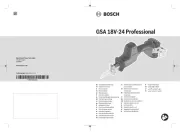
15 September 2025
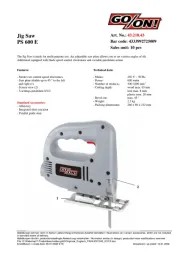
7 September 2025
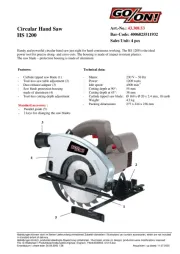
7 September 2025
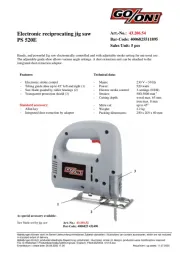
7 September 2025
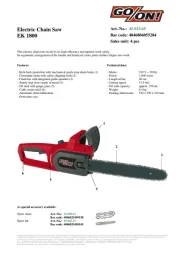
7 September 2025
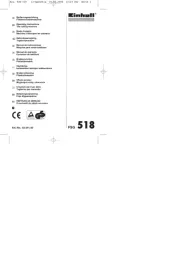
2 September 2025
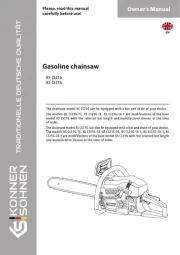
2 September 2025
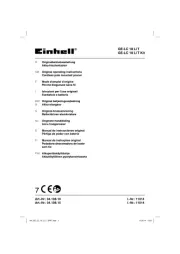
2 September 2025
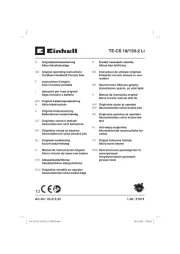
2 September 2025
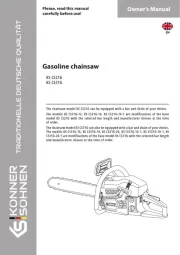
2 September 2025